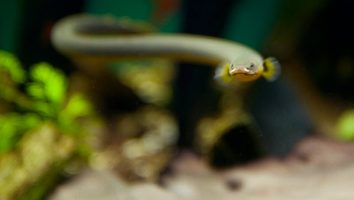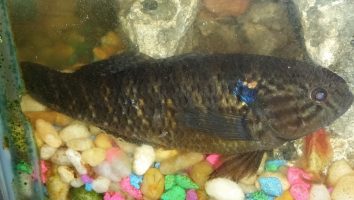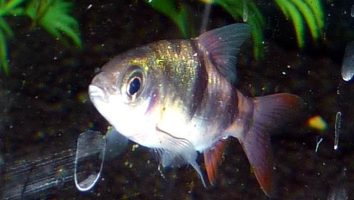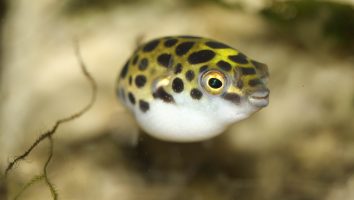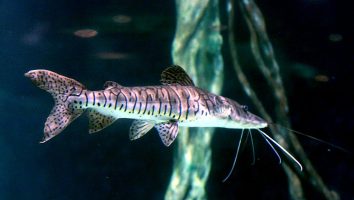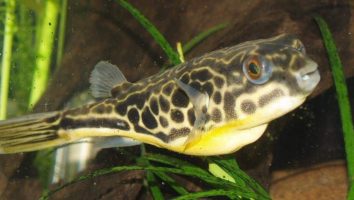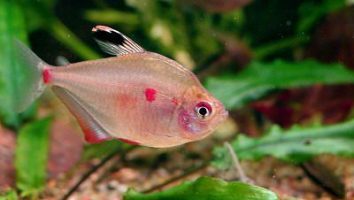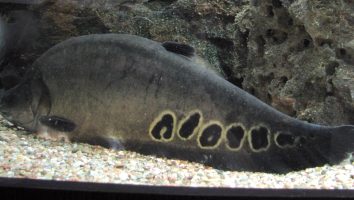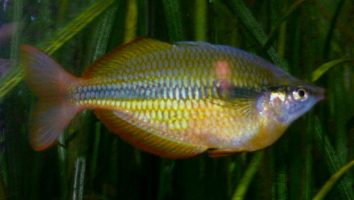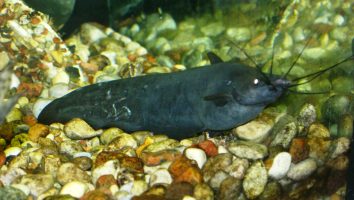Afra cichlids are a stunning freshwater fish that are perfect for beginner aquarists. They’re easy to care for, and their bright colors will light up any tank.
Despite their beauty, they’re actually quite hardy fish. Afra cichlids are native to Africa, and they can be found in a variety of habitats there.
In this guide, you’ll learn everything you need to know about Afra cichlid care. Tank size, diet, lifespan, and more. Let’s get started!
Table of contents
Species overview
The Afra cichlid (Pseudotropheus sp.) is a freshwater fish that is native to the lakes of East Africa. The most notable lakes where they can be found are Malawi and Tanganyika.
They are a popular choice for aquariums because of their vibrant colors and patterns. They come in a wide range of colors, but the most common are yellow, blue, and orange.
Afra cichlids are generally peaceful fish, but they can be quite aggressive toward their own species. This is something to keep in mind if you’re thinking about adding more than one to your tank.
These fish are relatively easy to care for and are a good choice for beginner aquarium enthusiasts.
Appearance
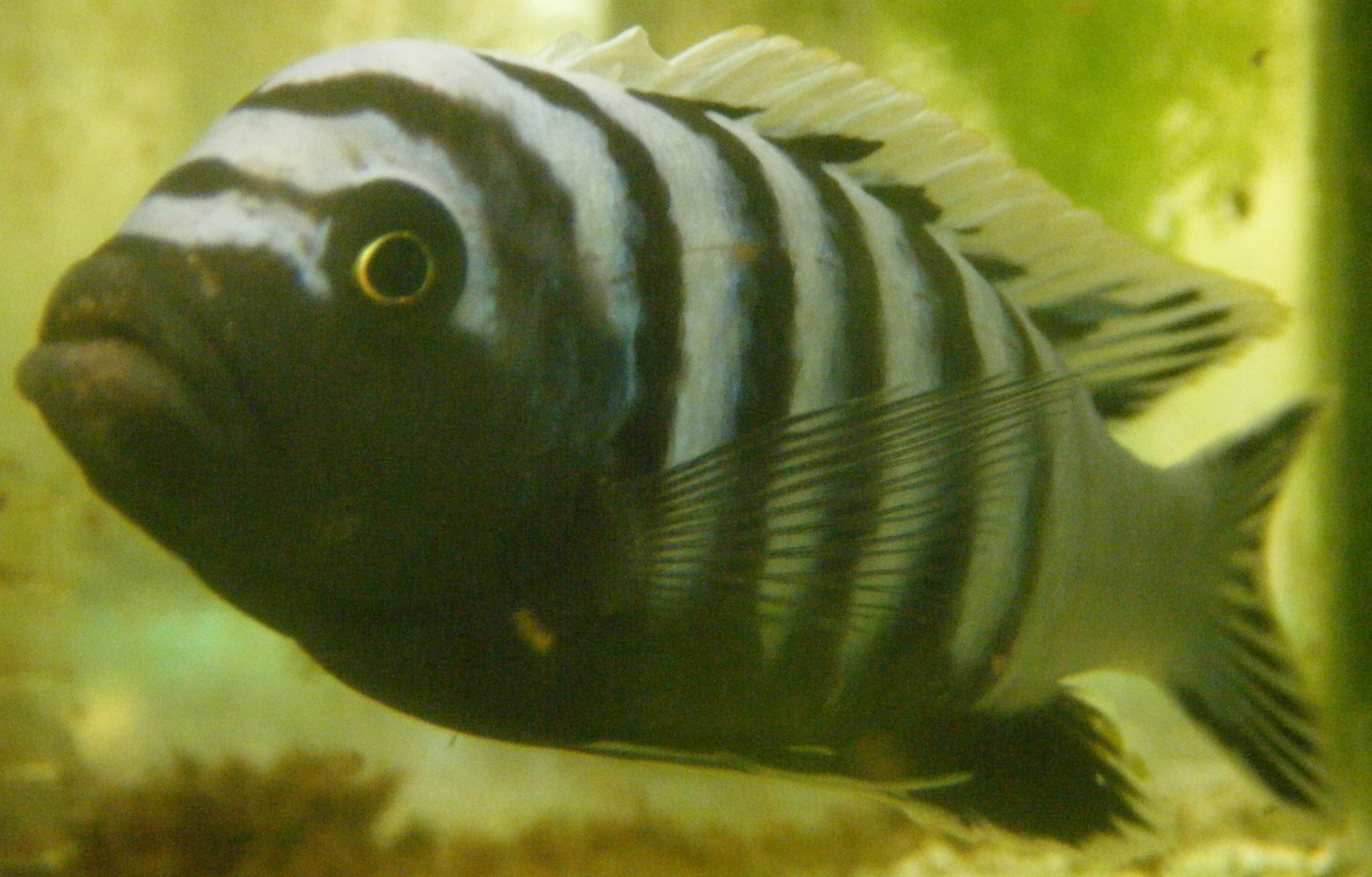
The Afra cichlid is a beautiful freshwater fish that is popular in the aquarium trade. They have a wide variety of color morphs that can range from bright yellow to deep red.
The body shape of the Afra cichlid is elongated and oval-shaped. They have a slightly compressed body with a slightly rounded belly.
The dorsal fin of the Afra cichlid is tall and starts about two-thirds of the way back on the body. The fin extends all the way to the tail and is slightly concave.
The anal fin is shorter than the dorsal fin and starts closer to the head of the fish. It also extends to the tail and is slightly concave.
The caudal fin is forked and the peduncle is thick.
The Afra cichlid has a large mouth that extends past the eye. They have large teeth that are arranged in a regular pattern.
The Afra cichlid is a peaceful fish that is good for a community tank. They are not aggressive and will not bother other tank mates.
Lifespan
The average lifespan of an Afra cichlid is between 10 and 15 years. These fish can live a long time if they’re well cared for!
As with any other animal, there are a number of factors that can impact the lifespan of an Afra cichlid. Poor water quality, for instance, can lead to a shorter lifespan.
Stress from bad tank mates or a suboptimal diet can also shorten their lifespan. But if these fish are well cared for, they can live a long and healthy life.
Size
The Afra cichlid is a relatively small fish, typically only reaching about 4-5 inches in length when fully grown.
Tank
Tank Size
The recommended tank size for one Afra cichlid is 50 gallons. If you want to keep more than one fish, you need to add at least another 50 gallons for each fish.
These fish are not as big as some of the other cichlids on this list but they are very active and like to swim around a lot. They also like to dig and will often uproot plants in the process.
Because of this, it’s important to give them a little bit of extra space so they can swim around without being cramped.
Water Parameters
The Afra cichlid is a freshwater fish that is native to Africa. In the wild, they can be found in several different countries including Tanzania, Kenya, and Mozambique.
The water parameters in these areas can vary, but the Afra cichlid does best in slightly alkaline water that is on the hard side.
To replicate these water conditions in your aquarium, aim for the following parameters.
- Water Temperature: 75 to 82 degrees Fahrenheit
- pH Levels: 7.8 to 8.6
- Water Hardness: 10 to 20 dGH
- Alkalinity Levels: 4 to 8 dKH
What To Put In Their Tank
Aquariums for Afra cichlids don’t have to be complicated. In fact, the simpler the better.
Since these fish come from Africa, they’re used to living in habitats with not a lot of cover. This means that you don’t need to go out of your way to include a bunch of decorations in their tank.
A few pieces of driftwood or some rocks should be more than enough. If you want to add plants then Java fern or Anubias are both good choices (since they can grow in low-light conditions).
As for the substrate, these fish don’t really have any preferences. You can use gravel, sand, or even a mixture of the two. Just avoid anything too large or sharp that could hurt their delicate fins.
Common Diseases
The Afra cichlid is a hardy fish that is relatively resistant to disease. However, they are not immune to all illnesses.
The two most common diseases that these fish experience are ich and hole-in-the-head disease.
Ich is a very common freshwater parasite that can cause a lot of problems if it’s not treated quickly. The most obvious symptom of ich is the presence of white spots on the body of your fish.
Hole-in-the-head disease is another common illness, although it’s not as widespread as ich. This disease is caused by poor water quality and the presence of activated carbon in the tank.
It presents itself as pits or holes in the head of your fish. While it’s not usually fatal, it can cause a lot of discomfort for your fish and it’s important to treat it quickly.
The best way to prevent these diseases is to maintain the quality of the water in your tank. A tank with clean and stable water conditions is the best way to keep your fish healthy and disease-free.
Behavior & Temperament
The Afra cichlid is a peaceful fish that does best in a community tank. These fish are known to be shy, so it’s important to provide them with plenty of hiding places.
While they are peaceful fish, they can be aggressive toward their own species. So, it’s best to keep them in pairs or groups. If you do keep them in pairs, it’s best to have one male and one female.
The Afra cichlid is a very active swimmer and loves to explore their surroundings. They are also known to be good jumpers, so it’s important to have a tight-fitting lid on your tank.
These fish are known to be good parents and will care for their young. The female will lay her eggs on a flat surface, and the male will fertilize them. Once the eggs hatch, the parents will watch over the fry and protect them until they are big enough to fend for themselves.
Tank Mates
The afra cichlid is a peaceful fish that can get along with most other species. These fish are native to Africa and prefer to live in groups.
In the wild, afra cichlids can be found in rivers, lakes, and ponds. They’re hardy fish that can adapt to a wide range of water conditions.
When choosing tank mates for afra cichlids, it’s important to consider the size of the fish. These cichlids can grow to be about six inches long, so they need plenty of space.
It’s also important to choose fish that can handle similar water conditions. Afra cichlids prefer water that is a bit on the alkaline side with a pH of around 7.5.
Here are some compatible afra cichlid tank mates:
- Convict Cichlid
- Firemouth Cichlid
- Electric Blue Johannii Cichlid
- Jack Dempsey Cichlid
- Kenyi Cichlid
- Red Zebra Cichlid
- Jewel Cichlid
Breeding
The Afra cichlid is a mouthbrooder, which means that the female will carry the eggs in her mouth until they hatch. This process usually takes about two weeks.
To get the ball rolling, you’ll need to set up a separate breeding tank. It should be at least 30 gallons and have plenty of hiding places. You can use caves, rocks, and plants to create a comfortable environment for your fish.
When the tank is ready, add one male and two females. The female Afra cichlids will be larger than the males.
As with most cichlids, the male will try to establish his dominance over the tank. He’ll do this by chasing the females and nipping at their fins. This is normal behavior and nothing to worry about.
Once the male has chosen a mate, he’ll start to court her. He’ll clean a spot on a rock or plant and then start to shake his body. This is called the quivering dance. He’ll do this to get the female’s attention.
If she’s interested, she’ll start to shake her body as well. Then, the two will start to spawn. The female will lay her eggs in the spot that the male has cleaned. He’ll then fertilize them.
Once the eggs are fertilized, the female will pick them up in her mouth and hold them there until they hatch. This process usually takes about two weeks.
You’ll know that the eggs are ready to hatch when the female starts to look bloated. This is because the eggs take up a lot of space in her mouth.
Once the fry have hatched, the female will release them into the tank. Then, it’s up to you to feed them. They’ll need live foods like brine shrimp or bloodworms. You can also give them crushed-up flake food.
Make sure to keep an eye on the fry. Afra cichlids are known to be fin nippers. They may start to nip at the fry’s fins if they’re feeling stressed or crowded.
If you see this happening, you can try to reduce the stressors in the tank. You can also move the fry to a separate tank.
Conclusion
The Afra cichlid is a great fish for beginner and experienced fishkeepers alike. They’re easy to care for and are very peaceful, making them a great addition to any community tank.
While they’re not the most exciting fish to look at, their unique coloration and patterns more than make up for it.
If you’re looking for a low-maintenance fish that will add some personality to your tank, the Afra cichlid is a great choice!

